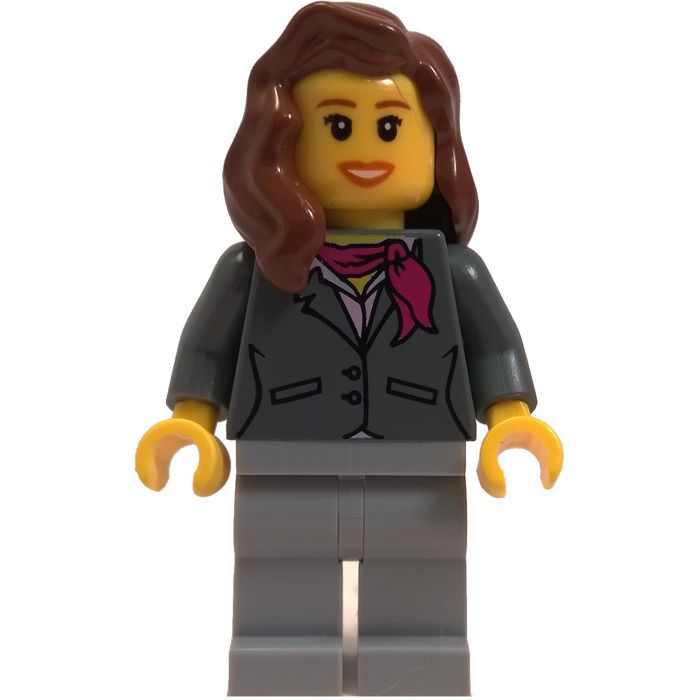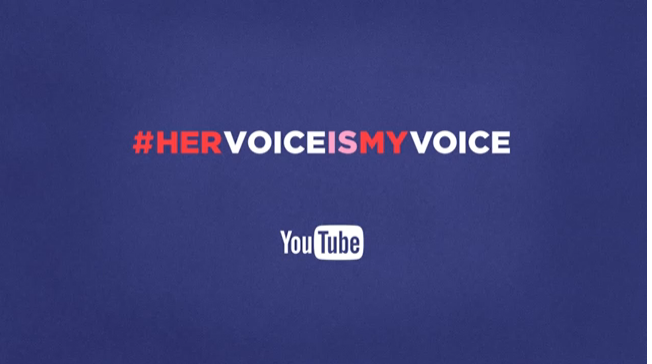Tag Archives: diversity
When it comes to tackling the gender equality issue in the industry, content marketing strategies need to be more than skin deep. It requires content marketers to proactively tell richer and more diverse stories to help bridge the diversity gap both within the industry and within the content they produce to engage the customers of today and tomorrow.
It’s no secret that women are underrepresented in senior leadership roles and that includes the marketing industry. While some 41% of marketers early in their career are women, only one in four marketing executive positions are filled by a woman. 
Recent research indicates that female marketing directors earn 17% less than their male peers and female marketing and sales directors, overall, are paid almost a fifth less than their counterparts. IPA reported that while men and women are at a pretty level playing field at the start of their careers, C-suite roles in creative agencies are still male dominated.
In honor of International Women’s Day, it’s important to assess the role that content strategists can play in moving the needle on the gender diversity challenge.
Creating compelling, authentic content requires telling stories with different voices, perspectives and experiences. It’s not about creating “diversity marketing,” rather it’s ensuring that all content marketing is inclusive to reflect the diverse audiences the content serves. Too often, brands segment content campaigns to serve specific diversity goals rather than incorporating diverse voices and stories within everything they do.
Last year, the Unilever-owned Dove brand released “The Dove Global Beauty and Confidence Report” which revealed that 71% of women and 67% of girls are calling for the media to do a better job portraying women of diverse physical appearance, age, race, shape and size.
It’s not surprising then that one of the key findings of research conducted by Unilever over the last few years found that a significant 40% of women don’t believe today’s advertising represents them. An analysis of advertisements across a range of countries and brands found that 50% depicted a negative or “not progressive” stereotype of women and just 3% showed clever or funny women.
Marketing, both B2C and B2C, has been gripped by an inertia in changing the way it portrays women. Content across the board is still succumbing to outdated stereotypes that are negatively impacting both business results and society at large.
However, a few brands are starting to actively pursue change. Food brand Knorr, for example, launched its #loveatfirstsight campaign to focus on people’ love for food rather than depicting the stereotypical representation of women in the kitchen cooking a meal for her family.
The Geena Davis Institute on Gender in Media partnered with Ford to combat gender inequality with a video series that tells the inspirational stories of three YouTube creators
In the series, #ShesGotDrive, writer and director Yulin Kuang, indie pop artist Clara C and YouTube star Taryn Southern talk about how they pursued their artistic passions despite early struggles. The videos support the institute’s goals of eliminating bias and challenging stereotypes in media targeted at children.
For Ford, the campaign furthers the brand’s efforts to support diversity and opportunities for women. The auto brand’s goals are promote gender equality and opportunities for girls and young women. Last year, Ford worked with Girl Scouts to sponsor Girls’ Fast Track Races, which allows girls to learn about automotive engineering by building and racing their own toy race cars.
In celebration of this year’s International Women’s Day, YouTube launched the #HerVoiceIsMyVoice campaign which aims to “celebrate the women who inspire us every day.” The campaign encourages YouTube users to share their voices—and videos—of inspirational women they know from around the world. 
Addressing the gender diversity challenge is especially critical as content marketers struggle to create effective content that engages not only Millennials but Generation Z, the cohort born between 1995 and 2010. It will be a strategic goal for most businesses given the impact of this generation which equates to $44 billion in purchasing power.
One notable Generation Z marketing trend that no content brand can afford to ignore is the emerging blurring of traditional gender roles. A 2015 study shows that 82 percent of Gen Zers think that ‘gender doesn’t define a person as much as it used to,’ and 56 percent say they know someone who uses gender-neutral pronouns (like ‘they,’ ‘them’ and ‘ze’).
According to the 2016 report The Everything Guide to Generation Z, 81 percent of Gen Z are passionate about gender equality. Brand are beginning to take notice and adapting their approach accordingly. Fashion leader Zara, for example, launched a genderless line targeting teenager while Coca-Cola launched a ‘Due or Diva’ campaign encouraging teens to share both the masculine and feminine sides of their personalities by choosing specially designed cans. Even the Barbie brand has gone gender-neutral with the introduction of a young boy in its advertising campaign.
In order to engage the Gen Z audience, brand marketers will need to think differently and sketch out a brand muse to ensure that the company’s values map to consumers aspirations which are not limited to gender. Gender-neutral marketing allows brands to resonate around the consumers’ entire lifestyle and not just their gender.
Tips for tackling gender diversity in content
Content strategists and marketers have an important role to play in communicating the brand’s commitment to create content that resonates and is reflective of all the audiences it serves. Here are some action steps to consider:
- Creative briefs. Make sure creative briefs address key questions relating to gender and diversity. Is the primary insight truly dependent on gender? What role will the primary character play? What is the appropriate appearance for the female character? How should her personality be represented?
- Expanded use of imagery. Perform an image search using any stock image service and you’ll find a vast array of imagery depicting women in stereotypical, one-dimensional ways. While men are depicted as strong leaders, images with women are most often focused in sexual or supporting roles. Select images which complement your storytelling approach that is focused on communicating diverse female voices, perspectives and experiences.
- Language choice. Content marketers need to be especially cognizant that language choice does not reflect a gender bias, whether or unconscious or not. Word choice matters.
- Diversity in thought leaders. Because men hold the majority of senior-level roles in organizations, it is easy to fall into a rut of only seeking them out as resources for content development. Journalists and writers should make a concerted effort to incorporate as much diversity as possible when seeking out the perspectives of thought leaders.
Accelerating women’s path to power
As content strategists, we understand that content is not just a nice-to-have but rather a strong driver of business success. As a result, content marketers should have not just a seat at the table but a leadership role in shaping strategic business growth. It is in that role that content leaders can proactively lead change to help resolve the diversity challenge in the marketing industry. Here are some action steps to start tackling the gender equality issue:
- Close the confidence gap. Research supports the evidence of a confidence gap among women in which women feel they are equally capable of their co-workers while men feel they are superior to their co-workers. An oft-cited finding from a Hewlett-Packard report reveals that while men apply for a job when they meet only 60% of the qualifications, women feel they must meet 100% of the qualifications before they apply for the role. It’s important to encourage women at all stages of their career to understand the unique strengths they bring to the table and pursue opportunities in the workplace.
- Invest in sponsorship programs, not just mentoring. A sponsor not only mentors junior colleagues but champions their prospects and skills, protecting them enough to take risks and make mistakes. Take the role of sponsor seriously and help advance the visibility of female colleagues within your organization.
- Champion leadership opportunities. The only way for women to close the confidence gap is to gain the experience and exposure to leadership within an organization. Look for opportunities to provide female team members the ability to learn leadership skills such as by leading a meeting and providing feedback to executive leaders.
- Gain visibility at industry events. Too often industry conferences feature the same rotating network of male keynote and session speakers. Submit a proposal for a conference session to your favorite event and support other female industry speakers.
- Share opportunities with your network. Men have traditionally done a great job of networking with each other to share news about opportunities, offer referrals or to provide support. Women, who often must juggle conflicting personal and professional priorities, have not been as proactive in their networking efforts. Attend professional networking events for women, be generous with your advice, share leads about new job opportunities with your female network and help build up women in their professional career journey whenever possible.
The gender awareness and diversity challenge will not be resolved overnight. It is not “women’s business” but the responsibility of both men and women to address. Content marketers can do their part to ensure progress is being made by creating compelling stories that reflect diverse voices, perspectives and experiences and by supporting women throughout their career journey.
Share This
Recent Blog Posts
- International Women’s Day: Taking action to gain traction
- Be a shoulder and a hand: 10 ways to help women in the workplace show up and shine up
- Unfinished Business: Content Marketing’s Role in Cracking the Glass Ceiling
- Lessons Learned from 84 Lumber’s Super Bowl Fail
- Brands Rise Up to Stand Out in Super Bowl 2017
Categories
Blog Post Tags
My Tweets

About Me
Portfolio Categories
Follow Me
Recent Posts
-
International Women’s Day: Taking action to gain traction
The first time I noticed men and women were treated...
-
Be a shoulder and a hand: 10 ways to help women in the workplace show up and shine up
International Women’s Day is an important day of...
-
Unfinished Business: Content Marketing’s Role in Cracking the Glass Ceiling
When it comes to tackling the gender equality issue...
-
Lessons Learned from 84 Lumber’s Super Bowl Fail
84 Lumber got it wrong on Super Bowl Sunday. In fact,...















